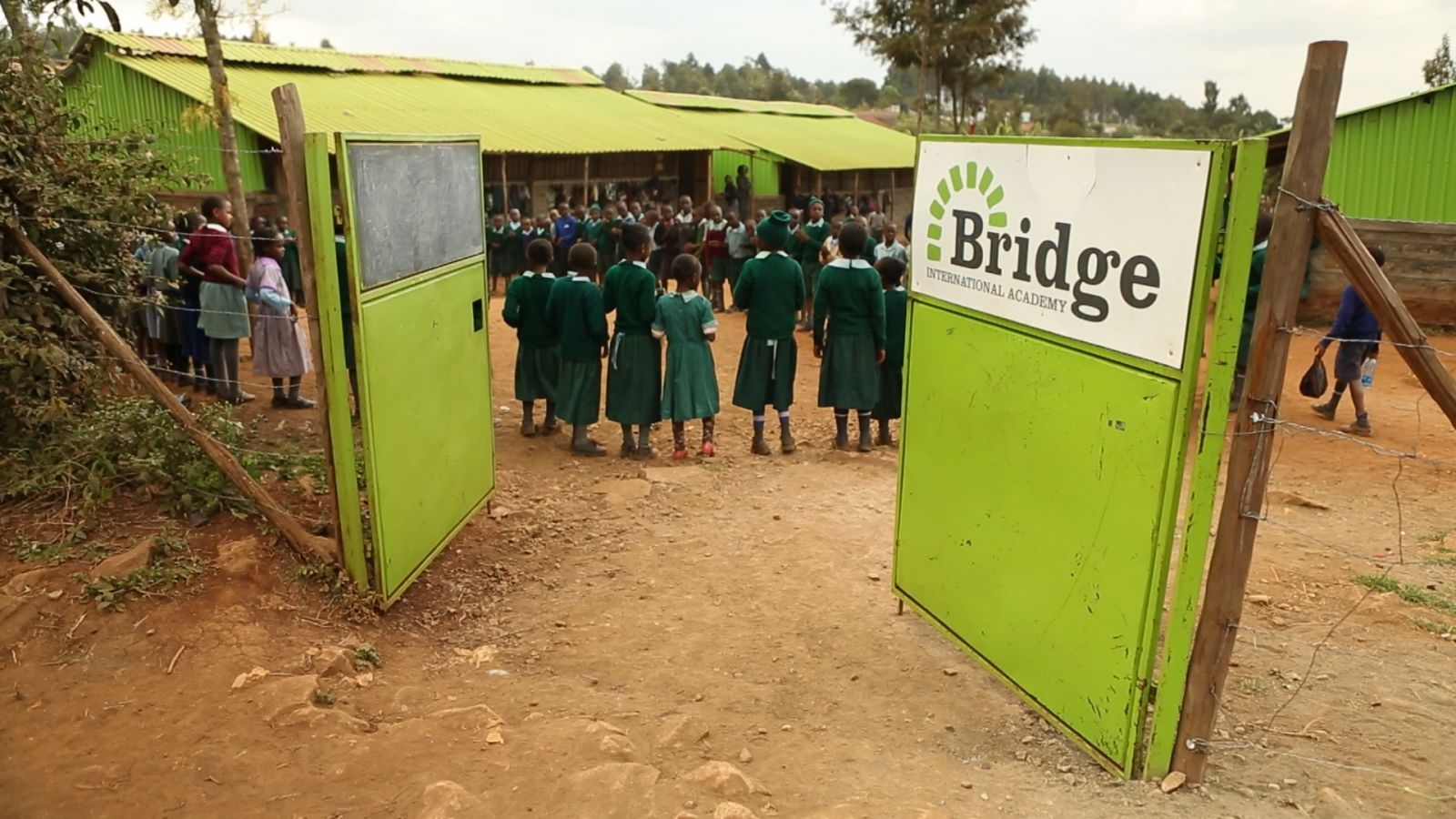Franco Sacchi is a documentary filmmaker born in Zambia and based in Boston, Mass. This is Sacchi’s second blog in a series for African Angle, in which he documents emerging entrepreneurs in Africa. For parts 1 and 3 of this series, click on the associated links.
By Franco Sacchi
Bridge International Academies (BIA), founded by Dr. Shannon May and her husband Jay Kimmelman in 2008, is one of the fastest growing companies in sub-Saharan Africa. Using smartphone technology and data analysis, it delivers school kits equipped with standardized lesson plans and training to primary school teachers in Kenya and Uganda (as well as Nigeria in the near future), with the aim of improving education for the poorest of the poor.
A classroom at Bridge International Academies
Dr. May became deeply aware of the tragic effects a lack of education has on children living in poverty while working on her Ph.D. dissertation in China. It was there that she also noticed a lack of any sustainable business model that could deliver affordable education to the poor. After a period of intense research, she and her husband decided to come to Africa to test a new groundbreaking hypothesis: how a high-quality, low-cost education for the poor can be achieved through mass distribution. Nairobi appeared to be a promising laboratory for such an experiment given the country’s appropriate population density, neutral regulatory environment, and ready pool of qualified workers.
The American couple believed that in order to solve the problem of education for hundreds of millions of children living in poverty worldwide, it was necessary to let go of the myth of the “brilliant teacher” who prepares perfect lesson plans and delivers each lesson based on his or her intuition and charisma. They believed that such perfect scenarios were too rare in communities where the teachers themselves live in abject poverty, and that the “brilliant teacher” myth itself was, in Dr. May’s words, “the main reason why there has never been any comprehensive education reform in the developing world.”
Dr. Shannon May
In an effort to take education past the “brilliant teacher,” BIA looked to create an “Academy-in-a-Box,” which would provide local teachers with the tools they needed to deliver an immediate, high-quality education to their students. However, as May and Kimmelman had ruled out the option of lobbying for the Nairobi public education system or otherwise applying for not-for-profit or NGO status, they realized that if they wanted to be profitable—while keeping fees as low as $5 a month per child—their business would have to scale up very quickly. In order to attract investors who initially were skeptical about building a business model targeted at people living in extreme poverty, BIA sought to convey the image of a school kit product that could be easily established and then replicated in a short amount of time.
One of the first steps that BIA took was to develop a solid curriculum based on best practices and published research in the field of pedagogy. However, the biggest problem remained the teachers. How do you prepare and train thousands and eventually hundreds of thousands of educators while keeping the costs down?
A BIA teacher uses his Nook tablet
Technology was the answer. At BIA, each teacher is given a Barnes & Noble Nook tablet, which is synced with fresh content every morning using a basic 3G smartphone that functions as a hot spot. Once the lessons for the day are downloaded, the teacher reads them from a script that tells them what to do or say at any given time. The two-way system also allows BIA’s headquarters to monitor, almost in real time, the activities of every teacher in every classroom. They can record attendance, track assessments, and collect other invaluable data.
The method proved successful, and educational outcomes—measured every year by third agency parties—were strong. Exam results from 2013 showed that BIA students performed significantly better in math and reading than their peers at neighboring public schools.
BIA Headquarters in Nairobi
By March 2015, BIA was operating 412 academies with more than 118,000 pupils in attendance across southern Kenya and reaching into Uganda. Fifty new academies are set to open in Uganda this year, and a similar plan will be launched in Nigeria in September. Additionally, the team plans to expand into India in the future. Dr. May has publicly announced that BIA’s 2025 goal is to reach 10 million students, but, as she points out, “that would serve, in today’s population numbers, only 1.5 percent of the population of children living in poverty.” Though there is a long road ahead, BIA’s teaching model serves as a lesson for all those seeking to improve educational infrastructure in the poorest areas of the world.
*****
*****
Franco Sacchi is the director of the award winning documentary “This is Nollywood” and co-founder of the Nollywood Workshops. For the past ten years his work had a specific focus on Africa and issues related to economic development.





